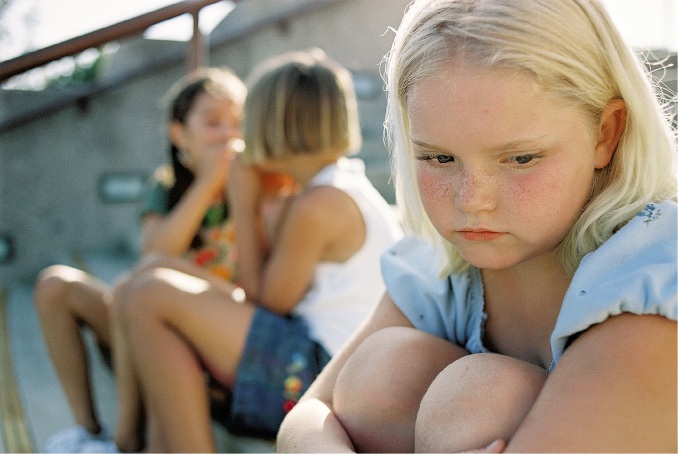Schoolyard bullying is nothing new. Taunts, exclusion and unprovoked physical aggression have made young lives miserable for centuries. So why is it such an epidemic in the 21st century?
Few children now get through their school years without being bullied or seeing a friend picked on. It could be name-calling, physical intimidation by a much larger boy or being excluded from friendship groups by bitchy girls.
This occurs when one child wants power over another and intimidates to dominate or humiliate. That child may have their own issues, such as low intellect or a troubled home life.
Most children have the potential to be bullied, but perpetrators often target those who are different or perceived as weak, such as a child who wears thick glasses, is overweight, quiet, studious or highly intelligent.
Rather than just react to problems caused by bullying, experts say parents also need to prepare their children so they can deal with it. In many cases it reflects the adult world, so they need coping strategies.
Part of the problem is that too many over-protective parents now fight their children’s battles rather than give them the skills to do it themselves, which in the long run can leave them vulnerable.
Evelyn Field, a Melbourne psychologist and author of Bully Blocking (Finch Publishing), says bullying involves an abuse of power by a more powerful person or group. It is usually repeated and may be regarded as a joke or a game, but with a total lack of awareness or empathy. Sustained bullying requires the target to react in a vulnerable manner.
Field says that unlike normal schoolground antics, bullying injures the victim and leaves physical, psychological or emotional scars. She says it may include teasing, harassment, name calling, extortion, threats, malicious rumours, physical violence, property damage, cyber bullying, gossip and exclusion.
If parents are unsure whether their child is being targeted, Field says they should record all suspect incidents to provide a record and identify patterns. They can also discuss why bullies act and whether they have given them any psychological ammunition by displaying their vulnerabilities.
Some experts urge victims to walk away, but Field says they should look the person who bullies in the eye and respond. “Blocking replies” are designed to show you are not intimidated and can include lines such as “thanks for pointing that out”, “that’s not rocket science”, “I’ve already heard that five times” or “tell us something we don’t already know”.
“I had one little boy who was rather fat . . . he sat down and he said, ‘Oh gee, the whale’s beached itself’ and everyone loved that,” she says. “It’s no use telling that boy, ‘Hey you’re fat’ because everyone knows he’s not sensitive.”
Field says those who bully need a reason and if you make a quip at your own expense, as the overweight boy did, that reason dissipates. She adds that cyber bullying is different and should be immediately blocked and reported to police.
Leading psychologists and educators Helen McGrath and Toni Noble developed the award-winning Bounce Back! program that builds resilience and coping skills. It is used in hundreds of Australian primary schools and some high schools and has spread to Britain and eight European countries.
Bounce Back! offers practical strategies for children to build resilience and function well at school and in life. Based on cognitive and positive psychology, it uses circle time, co-operative learning and educational games to build positive relationships and positive emotions.







